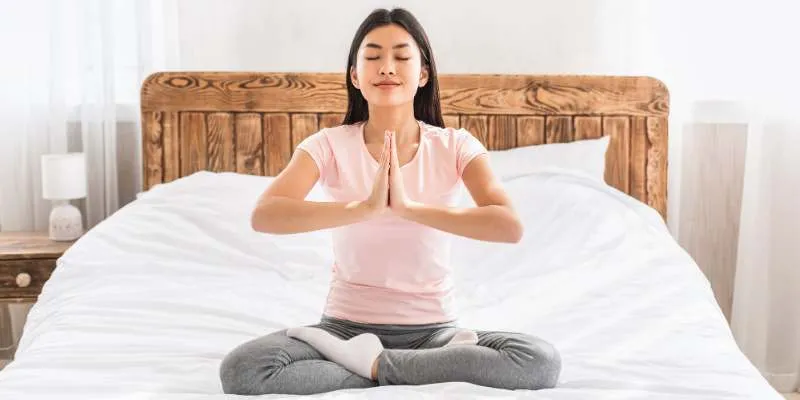Mindful Moves: The Ultimate Guide to Mindful Movement for Beginners
Mindful movements offer a powerful approach to connecting your body and mind, fostering inner calm and physical well-being. This beginner’s guide provides insights into building sustainable practices and understanding the core of mindful movement techniques.
Mindful exercises for mental health can help reduce stress, improve focus, and enhance physical flexibility. If you’re ready to embrace a positive change, this guide will help you embark on a journey toward inner peace and resilience. Discover intentional movement strategies for beginners and experience the transformative power of mindfulness.

What Is Mindful Movement?
Mindful movement emphasizes each movement, breath, and experience, blending physical exercise with awareness. It’s a way to develop bodily awareness by gently exploring how it moves and responds. Unlike traditional workouts, mindful movement focuses on listening to the body and staying present rather than intensity or achieving physical goals.
Popular mindful movement disciplines include yoga, tai chi, and qigong, where each movement is performed deliberately and gently to induce meditation. As you practice, your awareness of the connection between your body and mind will grow. Adopting mindful movement can help reduce stress, align with oneself, and improve mood.

Benefits of Mindful Movement for Mental Health
Mindful movement offers numerous mental health benefits. Focusing on slow, controlled motions helps create a peaceful environment to release tension and anxiety. This practice promotes awareness, allowing you to observe thoughts without judgment. Over time, mindful activities enhance emotional resilience, aiding in managing challenging emotions.
Mindful movement improves concentration, as each session requires focused attention on the present. This presence extends into daily life, increasing patience and attention span. Additionally, mindful activity releases endorphins, natural mood enhancers. Over time, these practices contribute to improved mental clarity and emotional well-being.
How to Start a Mindful Movement Routine
Starting a mindful movement practice requires a peaceful space and a willingness to explore. Begin with short sessions, perhaps five to ten minutes each day, to build consistency. Choose simple exercises like gentle yoga or mindful stretching that emphasize calm, controlled movements. Set an intention for each session, such as seeking inner peace or relaxation.
As you move, practice mindful breathing and notice how each breath influences your body. As you become more comfortable, gradually increase the duration. Remember, the goal is to remain connected to the experience rather than perfecting the movement. Approach each session with openness and patience.
Simple Mindful Moves for Beginners
Starting with basic mindful movements can help beginners ease into the practice. Mindful walking is an excellent exercise where each step is taken deliberately, focusing on the sensation of the foot touching the ground. Mindful stretching, where you gently extend each limb while concentrating on bodily sensations, is another beneficial activity.
Deep breathing is also valuable; inhale slowly and deeply, then feel each exhale. For tension release, consider seated movements like neck or shoulder rolls. These accessible exercises allow beginners to start small and establish a foundation for mindful movement.
Common Challenges and How to Overcome Them
Starting mindful movement can present several challenges. Many beginners struggle to stay focused as the mind tends to wander. When you notice your thoughts drifting, gently bring your attention back to the present. Physical discomfort can also be an issue; if a movement feels uncomfortable, modify or pause.
Remember, mindful movement is not about pushing through discomfort. Consistency can be challenging with a busy schedule. Aim to dedicate a specific time each day for practice. Over time, mindful movements will become second nature, allowing you to patiently overcome initial challenges.
Creating a Peaceful Environment for Mindful Moves
A serene environment can enhance your mindful movement practice. Find a quiet space away from external distractions. Dimming the lights or adding candles can create a calming atmosphere. While silence works well, some people find soothing instrumental music helpful for focus.
If you enjoy nature sounds, consider practicing mindful movement outdoors, in a garden or park. Wear comfortable clothing that allows easy movement. A yoga mat can also provide additional comfort. Establishing a dedicated space for your practice aids consistency and makes each session something to look forward to as a time to unwind and rejuvenate.
Tips for Maintaining a Mindful Movement Practice
Maintaining a mindful movement practice is more about consistency than perfection. Schedule your sessions at a convenient time, such as morning or evening. Consistent routines help reinforce the habit. Start small, practicing mindful movement for ten minutes daily, and gradually increase the duration. Reflect on the benefits of each session and note how you feel afterward.
Keep a journal to record your thoughts and any physical or emotional changes. Surround yourself with supportive resources, such as online courses or mindfulness apps. Finally, be kind to yourself. Each session is a step toward a more balanced, serene life; mindful movement is a journey.
Embracing the Journey of Mindful Movement
The journey of mindful movement is about cultivating a lifelong connection with your body and mind, beyond physical health. Each session, whether short or long, offers opportunities for learning and growth. Embrace all aspects of the experience, including challenges and small victories.
As you progress, you’ll find that mindful movement becomes a grounding practice, nurturing the spirit as much as the body. Practicing helps you connect with the present moment, steering daily life toward peace and clarity. Remember, mindful movement is a gift to yourself—a path toward resilience and inner calm.
Conclusion
Starting mindful movement has transformative effects on both the body and mind. Simple exercises like mindful stretching and breathing deepen your connection with yourself. Each session encourages presence, making mindful movement a powerful tool for emotional resilience and mental clarity. Embrace this journey with patience, knowing that each mindful action leads you toward inner serenity. Discover the benefits of mindful movement techniques for beginners and enjoy the positive changes in your well-being.











